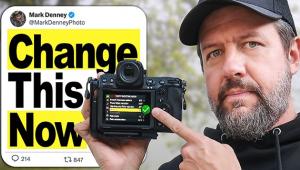Lowepro’s DryZone Rover; The Outdoor Photographer’s Dream Daypack—With Hydration System
 On
a recent trip to Curacao, Netherlands Antilles, I had a choice of several of
Lowepro's photo backpacks. I would load one up, try it on, and do the
same with each in turn. Even though I received the DryZone Rover for the express
purpose of testing it, I wasn't about to sacrifice my trip and take a
bag ill-suited to the task. Among the bags at my disposal were the Nature Trekker
AW II, the weather-resistant backpack I used for an Asheville, North Carolina,
hiking adventure. That bag was a contender--I was hardly aware of the 20
or so pounds on my back through hours of hiking over several mountain trails.
I also considered a Micro Trekker 200, small enough to fit on a puddle jumper.
I also thought about the new and very fetching CompuDaypack, which holds a laptop
in a padded upper compartment.
On
a recent trip to Curacao, Netherlands Antilles, I had a choice of several of
Lowepro's photo backpacks. I would load one up, try it on, and do the
same with each in turn. Even though I received the DryZone Rover for the express
purpose of testing it, I wasn't about to sacrifice my trip and take a
bag ill-suited to the task. Among the bags at my disposal were the Nature Trekker
AW II, the weather-resistant backpack I used for an Asheville, North Carolina,
hiking adventure. That bag was a contender--I was hardly aware of the 20
or so pounds on my back through hours of hiking over several mountain trails.
I also considered a Micro Trekker 200, small enough to fit on a puddle jumper.
I also thought about the new and very fetching CompuDaypack, which holds a laptop
in a padded upper compartment.
But what especially interested me about the water-resistant DryZone Rover was
the hydration system that's part of the package. Was it something I ended
up using to help me cope with the semi-arid climate of Curacao? Hmm, we'll
get to that in a moment.
One Pack On The Clamshell
The DryZone Rover is of the clamshell design. That means that the upper section
normally holds binoculars, maps and papers, camera manuals, a sandwich and snacks,
windbreaker or slicker, and assorted odds and ends. The lower half is largely
reserved for camera gear, housing a densely padded, removable insert. Padded
dividers are adjustable, up to a point, and one "cubicle" within
this compartment is designed with added supports to hold the camera with lens
attached, pointing downward so you can grab it easily--definitely a handy
way to store/access the camera. The insert also has a zippered lid, to further
keep unwanted elements out.
Because of the insert's considerable depth, the Rover is well suited to such lenses as the Canon EF 70-200mm f/4L. An EOS 5D with the EF 24-105mm f/4L IS or the 100mm macro attached also went in comfortably. The 300mm f/4L IS, while it fit, was really stretching things a bit, so it stayed home. Still, there is only so much you can stuff into this compartment. I had to leave my fancy Sekonic L-558 exposure meter home and take the smaller L-358 instead. Even then, I had to move the meter to the bag's upper level when things got tight. And with everything else that went into the upper level, I had to be careful not to overfill that compartment--especially if I'd planned to use the hydration system, which resides here as well. And I had to consider that making the bag top-heavy would make it a bit unwieldy when trying to get at the camera below.
 |
|
|
More Bark Or More Bite?
Without question, Rover has plenty of bite. And numerous sets of teeth--well,
zippers. One key feature is the Tizip zipper that grants access to the camera
compartment. The Tizip zipper is designed to prevent dust, moisture, rain, and
anything else from getting in. It is so tight in fact that you first have to
lubricate it (lubricant included) and work the zipper a number of times. Even
then, it is pretty resistant and takes some muscle to open and close. That's
why you may choose to leave it open once you've arrived at a certain spot.
An exterior buckle is used to fasten the two tiers shut (with or without the
Tizip closed). The upper level still has to be zipped shut separately, and I'd
recommend you zip the insert for added assurance. If you're crisscrossing
rugged terrain, you'd want to zip the Tizip all the way for added security.
You might have gathered that the Rover is not ideally designed for getting at
gear for a grab shot when on the trails.
Lowepro cautions that "the DryZone is waterproof but not intended to
be submerged for any period of time." If saltwater gets on the bag, rinse
it off and sponge off dirt with mild soap and water. Don't let sand or
dirt get in the teeth of the Tizip, or it will compromise the zipper. In fact,
Lowepro recommends keeping the bag away from sandy beaches and blowing out any
dust and sand that has gotten caught in the teeth with a large airbulb blower.
Personally, this didn't stop me from taking the bag to one windy beach
after another. It was either that or let my gear bake in the car. The company
also points out: "Do not use the DryZone as a personal flotation device."
Thankfully, I never got to test that.

































